Space is a dangerous and sometimes fatal business, but happily there were moments where a situation happened and the astronauts were able to recover.
An example: today (March 16) in 1966, Neil Armstrong and Dave Scott were just starting the Gemini 8 mission. They latched on to an Agena target in the hopes of doing some docking maneuvers. Then the spacecraft started spinning inexplicably.
They undocked and found themselves tumbling once per second while still out of reach of ground stations. A thruster was stuck open. Quick-thinking Armstrong engaged the landing system and stabilized the spacecraft. This cut the mission short, but saved the astronauts’ lives.
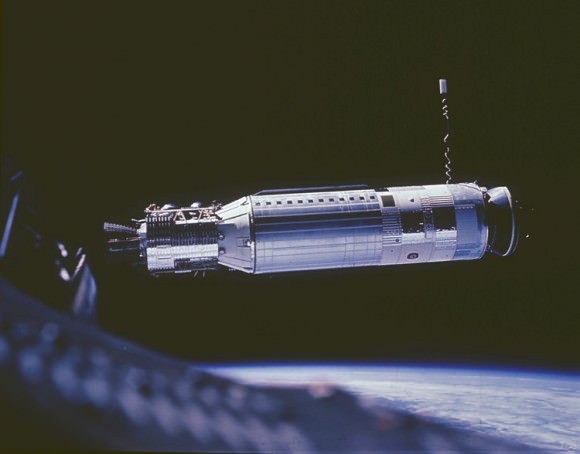
Here are some other scary moments that astronauts in space faced, and survived:
Friendship 7: False landing bag indicator (1962)
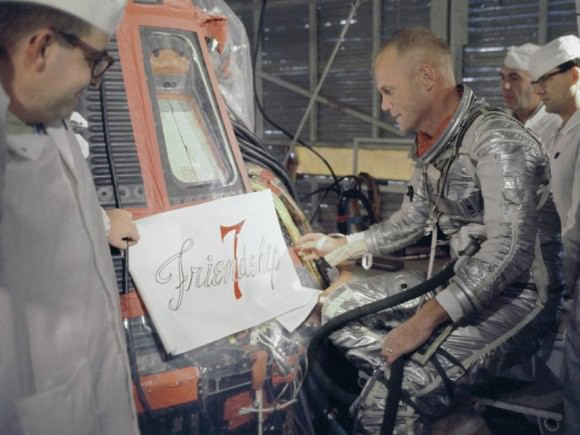
John Glenn was only the third American in space, so you can imagine the amount of media attention he received during his three-orbit flight. NASA received an indication that his landing bag had deployed while he was still in space. Friendship 7’s Mercury spacecraft had its landing cushion underneath the heat shield, so NASA feared it had ripped away. Officials eventually informed Glenn to keep his retrorocket package strapped to the spacecraft during re-entry, rather than jettisoning it, in the hopes the package would keep the heat shield on. Glenn arrived home safely. It turned out to be a false indicator.
Apollo 11: Empty fuel tank (1969)
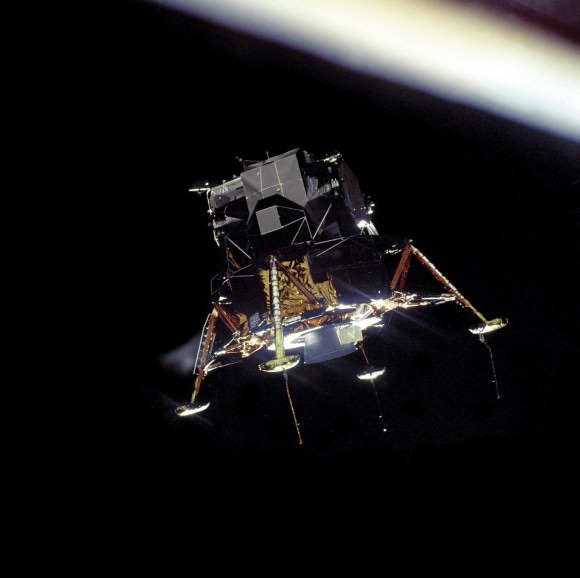
Shortly after Neil Armstrong announced “Houston, Tranquility Base, here, the Eagle has landed” during Apollo 11, capsule communicator Charlie Duke answered, “Roger, Tranquility. We copy you on the ground. You got a bunch of guys about to turn blue. We’re breathing again. Thanks a lot.” They weren’t holding their breath just because it was the first landing on the moon; Armstrong was navigating a spacecraft that was almost out of fuel. The spacecraft Eagle overshot its landing and Armstrong did a series of maneuvers to put it on relatively flat ground. Accounts say he had less than 30 seconds of fuel when he landed on July 20, 1969.
Apollo 12: Lightning strike (1969)
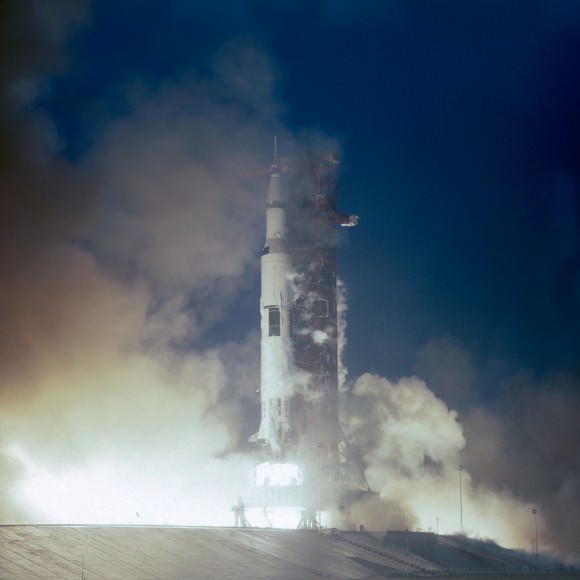
Moments after Apollo 12 headed from ground towards orbit, a lightning bolt hit the rocket and caused the spacecraft to go into what appeared to be a sort of zombie mode. The rocket was still flying, but the astronauts (and people on the ground) were unsure what to do. Scrambling, one controller suggested a command that essentially reset the spacecraft, and Apollo 12 was on its way. NASA did take some time to do some double-checking in orbit, to be sure, before carrying on with the rest of the mission. The agency also changed procedures about launching in stormy weather.
Apollo 13: Oxygen tank explosion (1970)
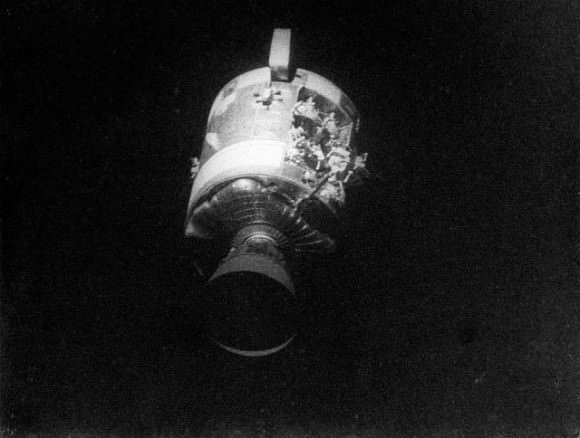
The astronauts of Apollo 13 performed a routine stir of the oxygen tanks on April 13, 1970. That’s when they felt the spacecraft shudder around them, and warning lights lit up. It turned out that an oxygen tank, damaged through a series of ground errors, had exploded in the service module that fed the spacecraft Odyssey, damaging some of its systems. The astronauts survived for days on minimal power in Aquarius, the healthy lunar module that was originally supposed to land on the moon. They arrived home exhausted and cold, but very much alive.
Apollo-Soyuz Test Project: Toxic vapours during landing (1975)
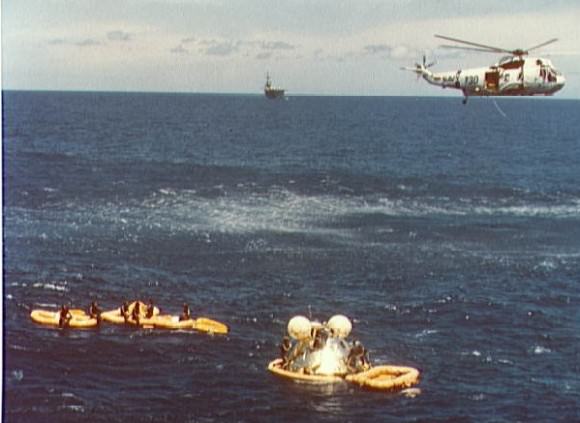
The Apollo-Soyuz Test Project was supposed to test out how well American and Russian systems (and people) would work together in space. Using an Apollo command module and a Russian Soyuz, astronauts and cosmonauts met in orbit and marked the first mission between the two nations. That almost ended in tragedy when the Americans returned to Earth and their spacecraft was inadvertently flooded with vapours from the thruster fuel. “I started to grunt-breathe to make sure I got pressure in my lungs to keep my head clear. I looked over at Vance [Brand] and he was just hanging in his straps. He was unconscious,” recalled commander Deke Slayton, in a NASA history book about the event. Slayton ensured the entire crew had oxygen masks, Brand revived quickly, and the mission ended shortly afterwards.
Mir: The fire (1997)
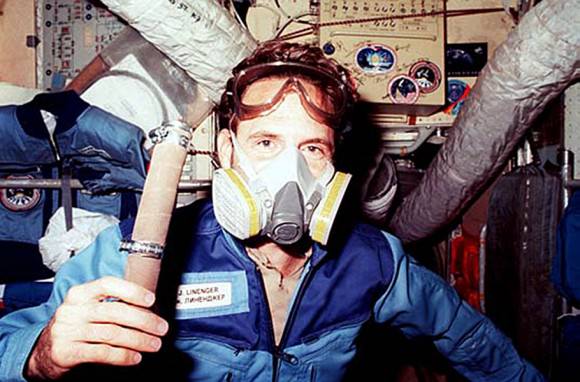
The crew on Mir was igniting a perchlorate canister for supplemental oxygen when it unexpectedly ignited. As they scrambled to put out the fire, NASA astronaut Jerry Linenger discovered at least one oxygen mask on board were malfunctioning as well. The crew managed to contain the fire quickly. Even though it affected life aboard the station for a while afterwards, the crew survived, did not need to evacuate, and helped NASA learn lessons that they still use aboard the International Space Station today.
STS-51F: Abort to orbit (1985)
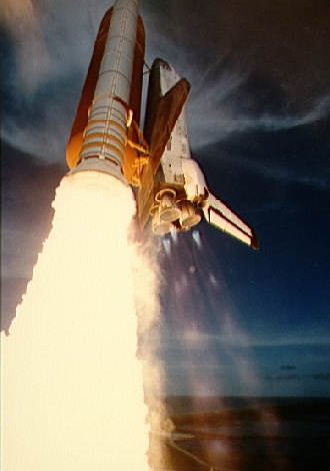
The crew of space shuttle Challenger endured two aborts on this mission. The first one took place at T-3 seconds on July 12, when a coolant valve in one of the shuttle’s engines malfunctioned. NASA fixed the problem, only to face another abort situation shortly after liftoff on July 29. One of the engines shut down too early, forcing the crew to abort to orbit. The crew was able to carry on its mission, however, including many science experiments aboard Spacelab.
STS-114: Foam hitting Discovery (2005)
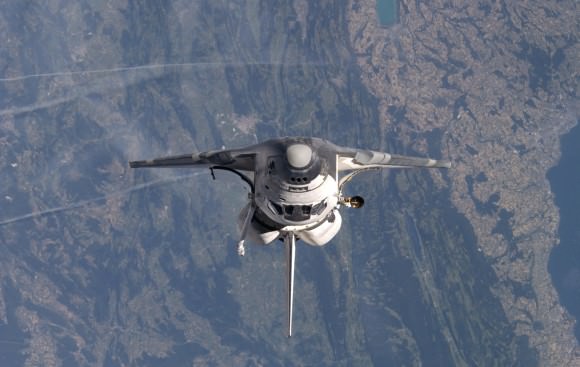
When Discovery lifted off in 2005, the fate of the entire shuttle program was resting upon its shoulders. NASA had implemented a series of fixes after the Columbia disaster of 2003, including redesigning the process that led to foam shedding off Columbia’s external tank and breaching the shuttle wing. Wayne Hale, a senior official in the shuttle program, later recalled his terror when he heard of more foam loss on Discovery: “I think that must have been the worst call of my life. Once earlier I had gotten a call that my child had been in an auto accident and was being taken to the hospital in an ambulance. That was a bad call. This was worse.” The foam, thankfully, struck nothing crucial and the crew survived. NASA later discovered the cracks in the foam are linked to changes in temperature the tank undergoes, and made more changes in time for a much more successful mission in 2006.
We’ve probably missed some scary moments in space, so which ones do you recall?

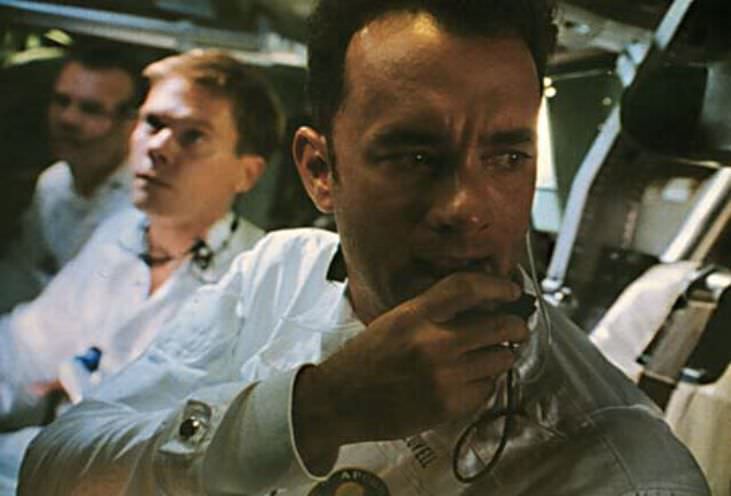
Wayne Hale’s STS-114 foam quote is drastically taken out of context here. He was, as his blog indicates, referring to the large piece of PAL ramp foam that liberated from the ET shortly after SRB separation — and, upon first find, caused initial uncertainty as to whether or not it had struck Discovery. It was quickly determined that the large PAL ramp foam liberation event missed Discovery’s left wing entirely. Discovery’s right wing was scuffed by a small piece of popcorn-ing foam — the foam liberation event that did in fact strike Discovery. However, Wayne Hale’s quote is not in reference to this event, as the posted story makes it out to be.
NIce report. I would also include Leonov’s problems for getting into the Soyuz spacecraft after the first EVA in space. After going outside the capsule he found that his spacecraft had inflated just to avoiding him to enter through the clutch. He decided to release oxigen from his vest and this saved him. After he was called to give explanations about the incident and wato be fined because he did not inform gtound control about the problem. He explained that he decided to aply the best solution engineers in ground control would need hours to think about. After his speech, Korolev standed up clappimg his hands… The rest of yhe comitee did the same and the incident was forgotten.
The progress M-34 crash into Mir.. Breached the hull, total mayhem.
I know, how could you leave this one off the list? A genuine manned spacecraft collision!
Yeah IMO it would have made the list of top 3… It was one of the few where there was a quick deterioration in conditions and honest-to-goodness frantic action to avert imminent death – no BS. The stuff of bad Sci-Fi, and I say that as the highest compliment.
One more: Soyuz 18a: http://en.wikipedia.org/wiki/Soyuz_18a
Launch didn’t reach orbit, reentered immediately, and:
“The capsule landed on a snow-covered slope and began rolling downhill towards a 152 m (499 ft) sheer drop before it was stopped by the parachutes’ becoming snagged on vegetation”
How about the entire career of Boris Volynov?
He and the rest of his crew was kicked from Voshkod 1 because Soviet authorities discovered Volynov’s mother was Jewish.
He
finally went up on the Soyuz 4/5 crew transfer mission. Returning alone
in Soyuz 5, the service module failed to separate from the RV and the
craft re-entered nose-first, threatening to burn through the weakest
part of the cabin. Toxic fumes filled the cabin and knocked Volynov
out.
While he was unconscious, the service module broke off at
the last possible minute, and the RV righted itself. Then the
parachutes failed to properly deploy, and the RV hit the ground with
such force that it broke several of Volynov’s teeth.
Seven years
later, Volynov went up again on Soyuz 21 to the Salyut 5 station, where
his partner, Vitali Zobolov, began to go insane, possibly due to nitric
acid fumes inside the station. Zobolov’s psychosis reached the point
that the mission had to be scrapped. The craft would not un-dock from
the station at first, then high winds threw the craft 200 km off course,
and landed hard… again.
After those two missions, Volynov
entered a well-deserved and hopefully less eventful retirement, the
luckiest unlucky person ever to reach space and somehow return.
http://www.astronautix.com/flights/soyuz5.htm
http://www.astronautix.com/flights/soyuz21.htm
http://en.wikipedia.org/wiki/Boris_Volynov
With regard to the Apollo 12 launch: your use of the word “scrambling’ implies some sort of frantic, borderline panic. In reality, it was the complete opposite.
When the two lightning strikes knocked the Apollo spacecraft systems off-line, the down-link to Mission Control was corrupted and all the data screens just showed gibberish. EECOM controller, John Aaron, remembered seeing an identical corrupted-data display on his screen during a simulation a year earlier. He and some of his back-room engineers had investigated the problem and worked out a solution, should it ever occur again.
So, when it *did* occur again, during a real launch, even after a year, Aaron recognised the problem and knew what steps to take. He told Flight Director Gerry Griffin to tell the crew to “…try SCE to AUX.” No-one, including Griffin, had heard of SCE before – SCE was the on-board Signal Conditioning Equipment that turned all the different spacecraft data into a form that could be downloaded to Mission Control. Aaron knew that the SCE had been corrupted – they didn’t yet know that the Saturn 5 had been hit by lightning – and that setting the control switch to Auxiliary would restore the system.
In the Apollo, Conrad and Gordon didn’t know where the switch was, but Bean, over in the right-hand seat knew – it was on the main control panel, right in front of him – and flipped it. All the data suddenly came back on the mission control screens and the crew started re-setting the systems that had been knocked out by the lightning strikes. The rest is history, including John Aaron’s part in it. His “SCE to AUX” has been named the greatest call in spaceflight history, as the Flight Director had been on the verge of aborting the mission.
MR-4: Grissom nearly drowns
MA-7: Carpenter runs out of attitude fuel
MA-9: Cooper has electrical fire
GT-5: fuel cells don’t work early in flight
GT-9: Cernan virtually blind during EVA
Apollo 14: landing radar late acquiring lock
Apollo 16: SPS gimbals misbehave
Well, drop back 10 yards and punt the damn thing! …lol.
No matter the mission flight into space. First & foremost, is having the ‘trust’ to go in the first place.